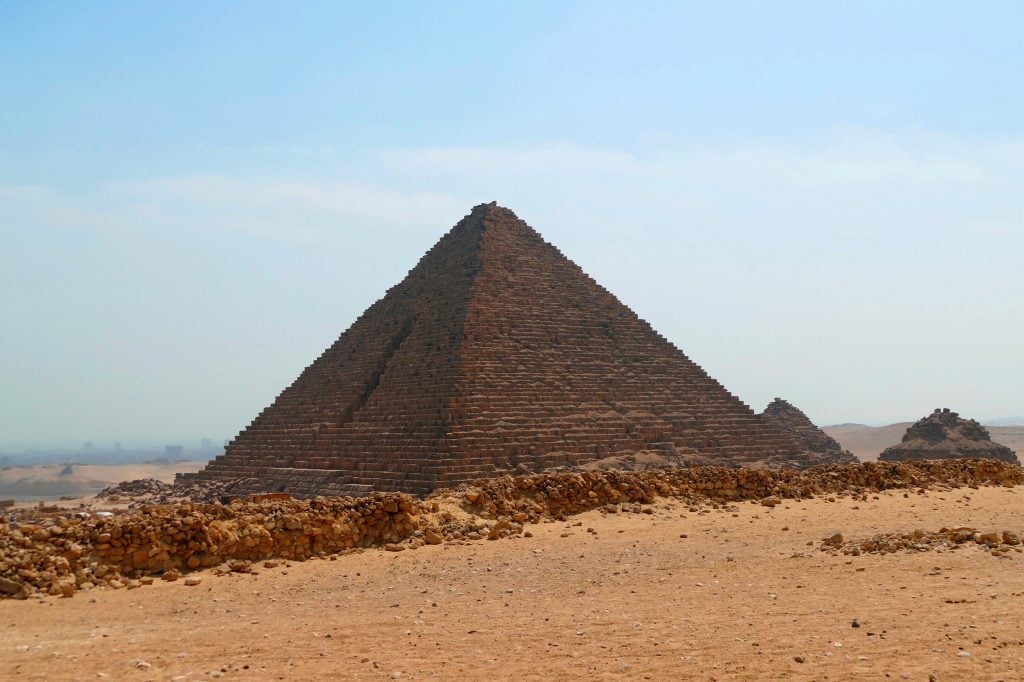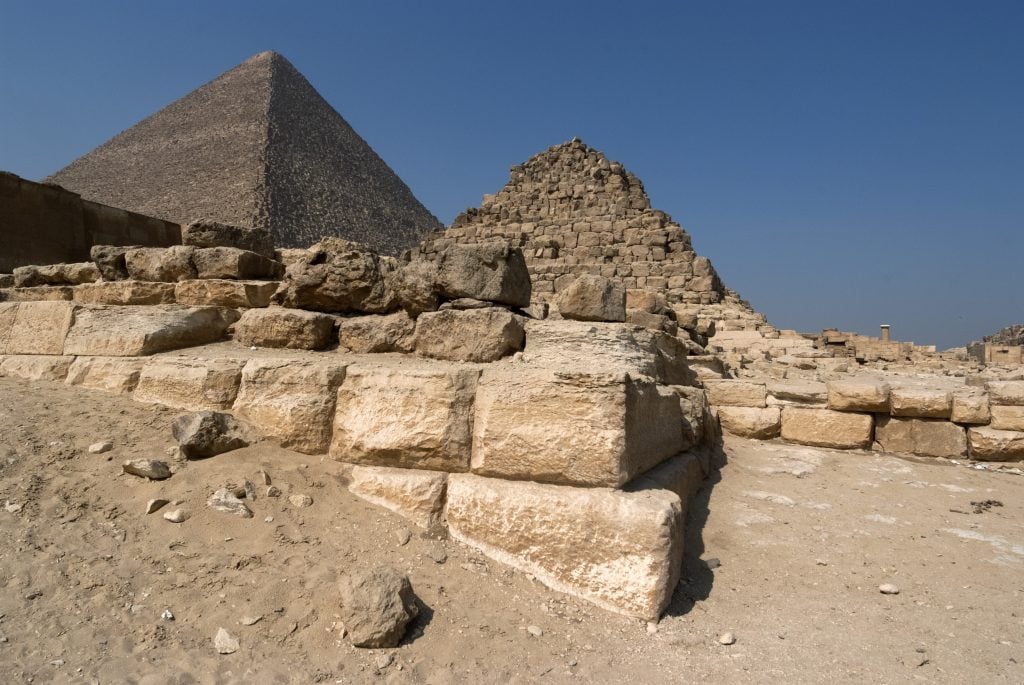Archaeology & History
After Protests, Egypt Will Not Renovate a Pyramid at Giza After All
An international hue and cry resulted from the government’s plans to add granite cladding.

An international hue and cry resulted from the government’s plans to add granite cladding.

Brian Boucher

It was to be “the project of the century,” but a plan to restore one of the three pyramids of Giza with ancient stones has been scrapped. Mostafa Waziri, secretary-general of the Supreme Council of Antiquities, had announced the plan to clad the smallest of the three, the pyramid of Menkaure, in a video on January 25.
The pyramid of Menkaure was originally meant to be clad in granite rather than limestone, and a small number of granite blocks were in fact applied at the base of one side of the pyramid before construction halted, possibly owing to Menkaure’s death in about 2500 B.C.E. The plan to restore the monument to what is believed to be its original condition involved assembling its facade with some of the stones that currently lie at the pyramid’s base.

The Pyramids of Giza, Egypt. Photo: EMD/Then and Now Images/Heritage Images via Getty Images.
The plan was met with an international backlash from archaeologists. Celebrated Egyptologist Monica Hanna called the project “tantamount to tampering with Egyptian antiquities and undermining its antiquity and history.”
Following these protests, Egypt’s tourism minister formed the Menkaure Pyramid Review Committee to assess the project. It would be impossible to determine where block had originally been laid, said Zahi Hawass, a former minister of antiquities who headed the committee. He also said that securing them in place would require cement, which in the committee’s review would mar the pyramid.
“The Menkaure Pyramid Review Committee has unanimously objected to the re-installation of the granite casing blocks, scattered around the base of the pyramid since thousands of years ago,” said a report by the committee.
“There is no way,” Hawass told CBS News. “You cannot know the location of each stone. It’s an impossible project.”